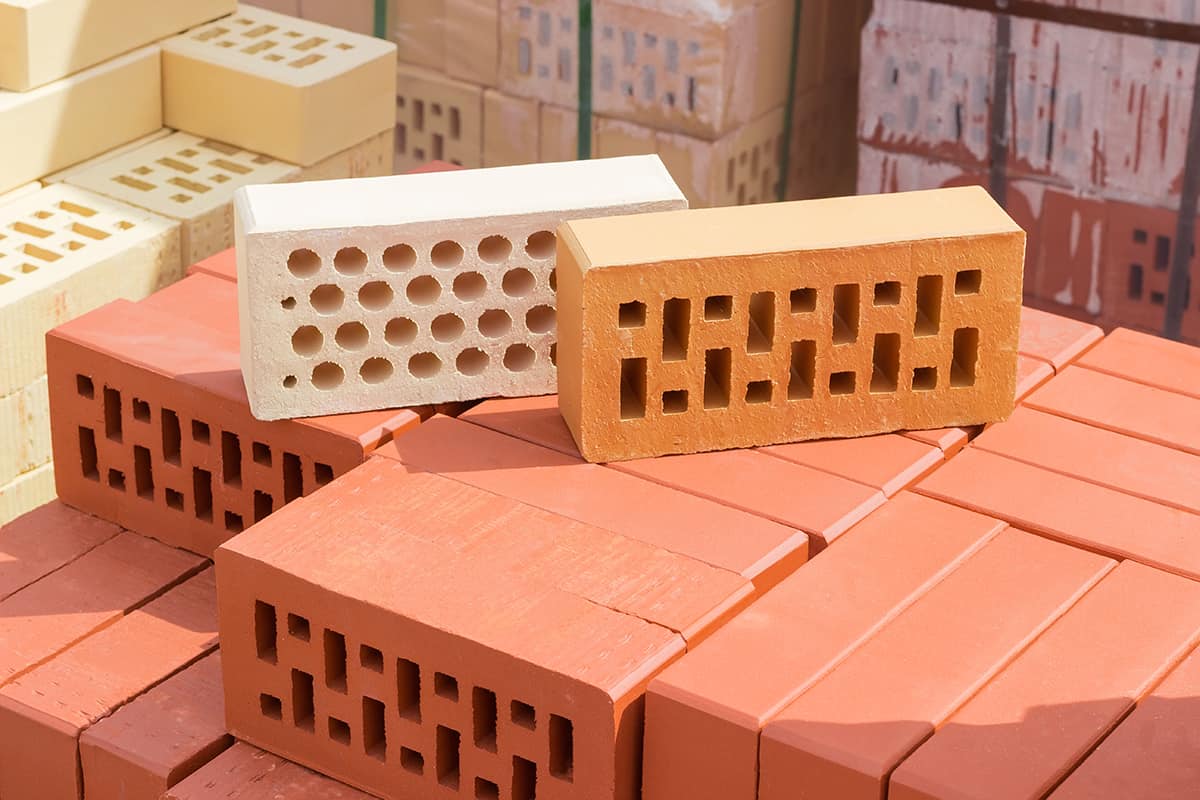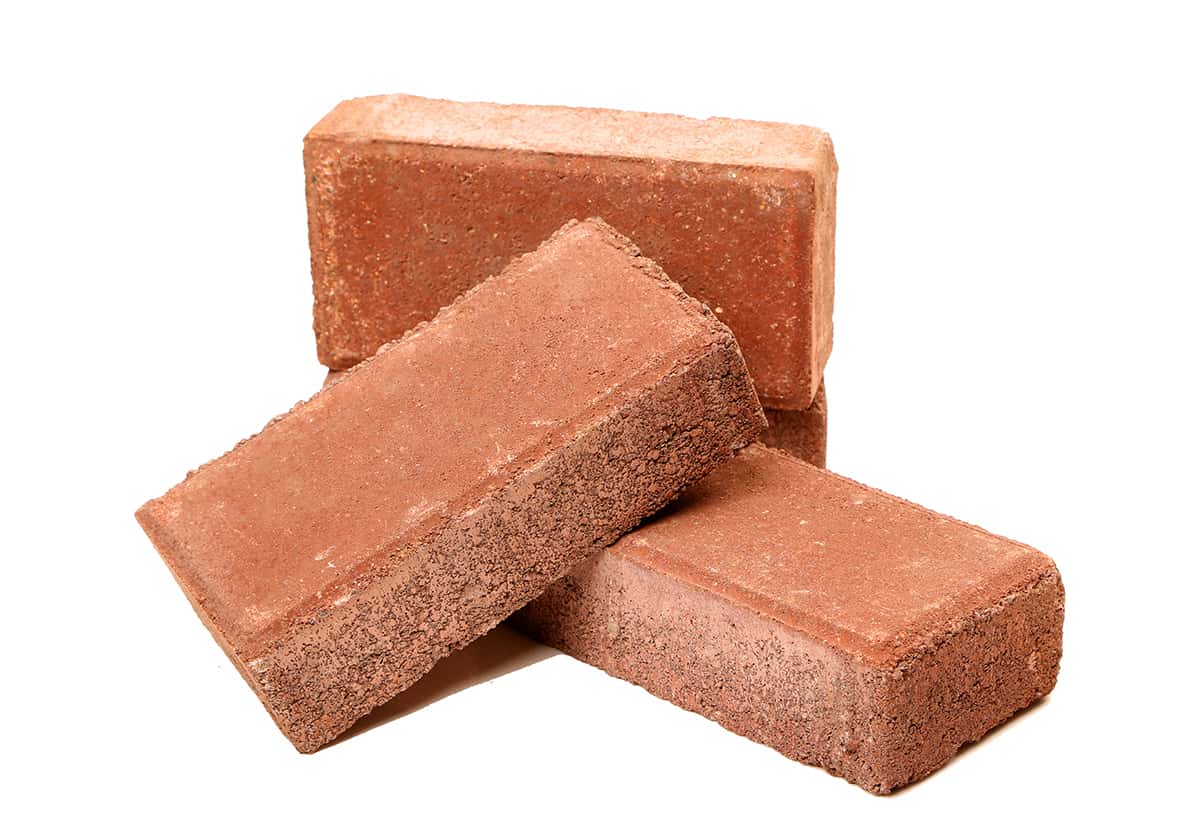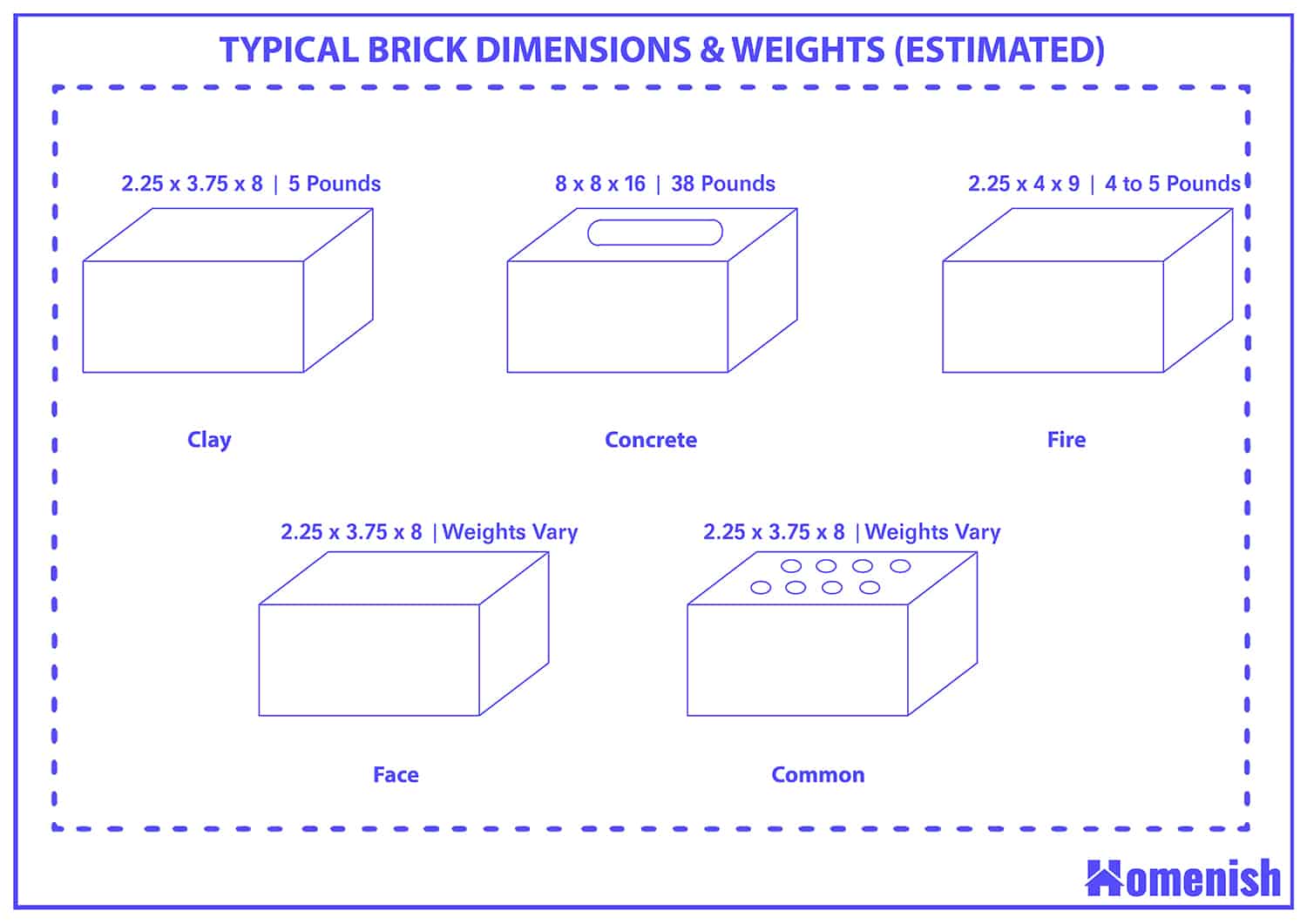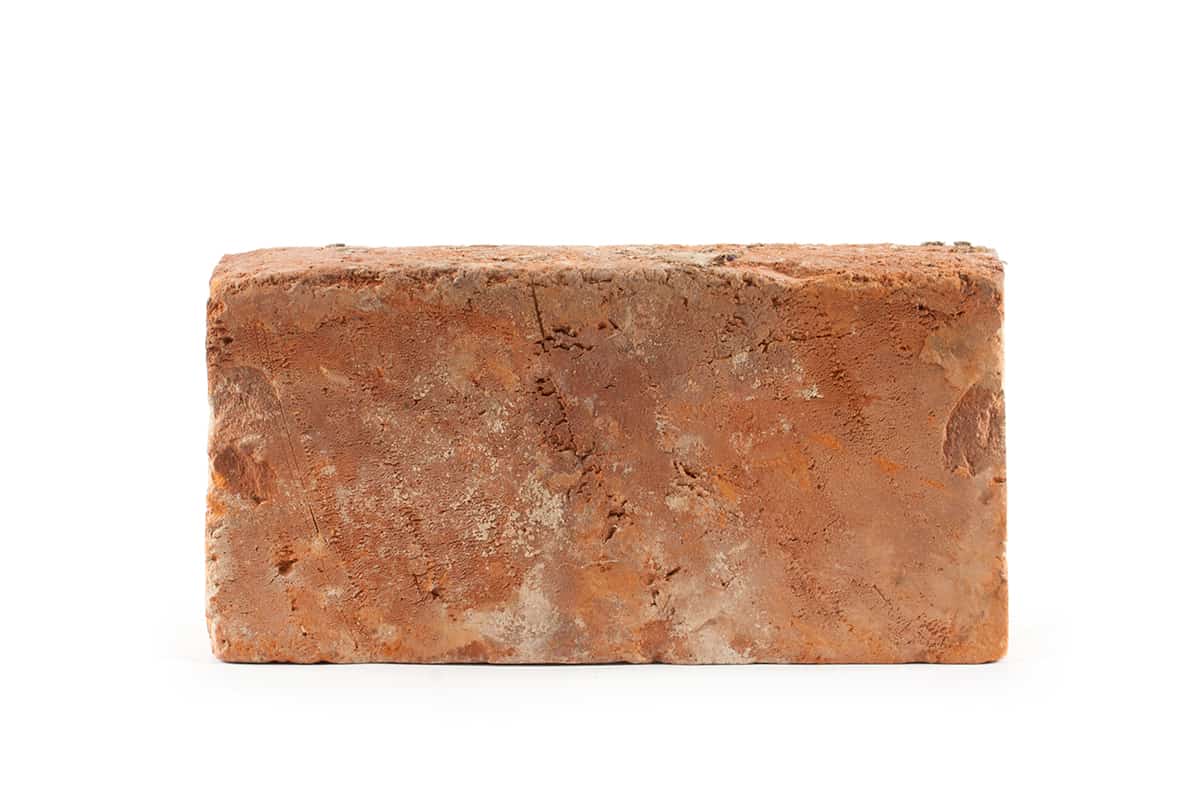Bricks have been a cornerstone of construction for centuries, yet how often do we truly contemplate their weight?
Usually, a regular brick made of clay weighs about 5 pounds, while one made of concrete can weigh over 30 pounds. But the weight can change depending on the brick’s size, shape, and material. Bigger or special bricks can be even heavier, over 10 pounds or more.
But, the depth of bricks transcends their weight. This article delves into the various types of bricks, investigating their unique features, physical properties, and diverse applications. Get ready to unearth the enthralling world of bricks and their limitless potential in construction!
The Different Types of Bricks
In the vast world of construction, bricks are a fundamental building block. However, not all bricks are created equal! There are many types of bricks available for use in construction projects, each with unique features and properties.
One of the most common types of bricks is clay bricks, made from natural clay that is fired in a kiln. These bricks are known for their exceptional durability and strength and come in various sizes and colors.
Concrete bricks are another prevalent type, made from a mixture of cement, sand, and water. These bricks are also sturdy and long-lasting and can be produced in diverse shapes and sizes.
Specialty bricks are designed for specific applications, such as firebricks that are made to withstand high temperatures and are often used in fireplaces and ovens.
Face bricks, on the other hand, have a smooth, polished surface that is meant to be visible. They come in a range of colors and styles and are often used for decorative purposes.
Common bricks have a rougher surface and are typically covered with stucco or other finishing materials. These bricks are often used for structural purposes.
Lastly, eco-friendly bricks made from sustainable materials, such as compressed earth, straw, and recycled materials, offer an environmentally friendly alternative to traditional clay and concrete bricks.
How Much Does a Brick Weigh?
The following chart will give a rough estimate of the estimated dimensions and weights of the aforementioned brick types.
| Type of Brick | Dimensions (inches) | Weight (pounds) | Weight (kilograms) |
| Clay | 2.25 x 3.75 x 8 | 5 | 2.27 |
| Concrete | 8 × 8 × 16 | 38 | 15 to 17.24 |
| Fire | 2.25 x 4 x 9 | 4 to 5 | 1.81 to 2.27 |
| Face | 2.25 x 3.75 x 8 | Varies | Varies |
| Common | 2.25 x 3.75 x 8 | Varies | Varies |
Factors Affecting Brick Weight
1. Composition of materials
Bricks can be made from a variety of materials such as clay, shale, or concrete. The specific composition of the material can impact the weight of the brick.
2. Manufacturing process
There are different methods (PDF) used in making bricks such as extrusion or molding. These methods can affect the weight of the brick because of the amount of material used and the pressure applied during the process.
3. Size and shape
The shape and size of the brick can affect its weight. Larger bricks will generally weigh more than smaller ones. The shape of the brick can also affect its weight. Irregularly shaped bricks may weigh more due to the amount of material required to fill in any gaps.
4. Drying and firing process
After the brick is formed, it goes through a drying and firing process. The amount of time the brick is dried and the temperature at which it is fired can affect its weight. Over-drying can cause the brick to shrink and weigh less while under-drying can lead to cracks and make the brick heavier.
5. Surface finish
The texture and finish of the brick’s surface can affect its weight. A smoother surface may weigh less than a rougher one due to the amount of material used to create the texture.
6. Additives
Some manufacturers add additives to the brick, such as sawdust or ash, to make it lighter. These additives can reduce the weight of the brick while still maintaining its strength and durability.
Why Is Brick Weight Important?
Bricks are an important part of building construction, and their weight is something to consider for many reasons.
Firstly, heavy bricks can impact the stability and safety of a building. If the bricks are too heavy, it could put too much stress on the foundation and lead to problems later on. If they’re too light, the building may not be able to stand up to strong winds or harsh weather.
Secondly, the weight of bricks can affect how efficiently the construction process goes. Heavy bricks can be harder to move and handle, making the process slower and increasing labor costs. So, it’s important to choose the right type of brick for the job based on factors like weight, durability, and cost.
Lastly, the weight of bricks can impact a building’s energy efficiency (PDF). Heavy bricks can absorb and release heat slowly, helping to regulate the temperature inside a building and reducing the need for additional heating or cooling. This can lead to lower energy bills and a more sustainable building.
The Impact of Brick Weight on Building Design
When it comes to designing a building, one crucial consideration is the weight of the bricks. The weight of bricks can significantly impact the overall stability and safety of the structure. If the bricks are too heavy, they can put an immense amount of stress on the foundation and cause structural issues over time. Similarly, if they’re too light, the building may not be able to withstand extreme weather conditions like strong winds.
Moreover, the weight of bricks also plays a vital role in the construction process. Heavy bricks can be challenging to move and handle, which can slow down the construction process and lead to increased labor costs. Therefore, it’s essential to choose the right type of brick for the job, taking into account factors like weight, durability, and cost.
In addition, the size and shape of bricks can also impact the building design. For instance, larger or irregularly shaped bricks may require additional support, which can change the building’s overall appearance. In contrast, lighter bricks may not have the same level of durability or visual appeal as heavier bricks.









